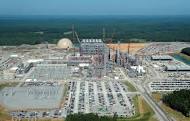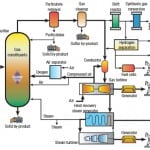Another Department of Energy clean coal technology project is staggering and looks like it is about to fall well short of the finish line. This time, it is the Texas Clean Energy Project, into which DOE has committed some $450 million, and which the agency’s inspector general has said has consistently missed project deadlines and failed to line up private-sector financing.
The Houston Chronicle reported that DOE was ready to pull the plug on its funding July 15, but the project owner, Summit Power filed for an informal dispute resolution process provided in DOE rules, which will keep the project on life support for an unknown period. Summit Power is led by former Reagan administration DOE heavy hitters including its chairman emeritus Don Hodel, a former Reagan administration secretary of energy and interior secretary, and chairman Earl Gjelde, Hodel’s depute at Interior and Energy.
An Energy Department statement said, “We have been working with the project as we understand how important it is to move this technology forward. We will continue to work with the company to figure out the best next steps.” DOE planned to end its support when the company was unable to show firm commitments from investors and lenders to move the project ahead.
POWER reported in May that DOE “is ready to end it involvement with the project,” which would “effectively shut the project down.” The agency was basing its decision on an Inspector General report that found the 400-MW integrated coal gasification and combined cycle generation with carbon capture and sequester was in serious financial trouble.
The project, with a price tag that has now risen to about $4 billion, is one of several so-far unsuccessful attempts at coal combined with carbon capture and sequestration. So far, $116 million in federal funds have flowed to the Texas project.
Lukas Ross of Friends of the Earth commented, “This has finally graduated to the point of absurdity. After years of delays, rising costs, and a damning report from the [DOE] Inspector General, this project is somehow still alive. For a false solution to the climate crisis and a waste of taxpayer funds, this thing has more lives than a cat.”
DOE has supported several clean coal projects aimed at capturing and sequestering CO2 over recent years (and other so-called clean coal projects dating back more than 30 years). In each case, the CO2 would be stored for sale to oil and gas companies for enhanced oil recovery.
The 168-MW FutureGen project in Illinois, which DOE backed with a $1 billion commitment, was announced in 2003 during the Bush administration. DOE pulled the plug in February 2015, when the private sector partners were unable line up sufficient financial support.
Hydrogen Energy California, approved in 2009 for $408 million in DOE funding for a 300-MW project with a total estimated cost of $4 billion bit the dust a year ago (after receiving about $150 million of federal funds). The developers were unable to find customers in California’s oil belt, where the plant would have been located, for the CO2.
In Mississippi the Southern Company has been pushing forward with the most aggressive coal and carbon capture project, the 580-MW Kemper County project, which would gasify coal, generate electricity from the case, and capture and store CO2. DOE has put some $270 million into the project, which has suffered management and technology problems, is years behind schedule and billions of dollars over budget, as a detailed (and sometimes unfair) New York Times article detailed this month.

MIT’s Technology Review magazine commented, “Unfortunately, Kemper is just the latest sign that clean coal, after decades of research and billions of dollars of development, is an oxymoron—at least in any economically realistic sense.”
In a positive development for Kemper, Southern Co. announced that on July 14 the project had successfully gasified lignite (although it has not yet used the syngas to generate power). That’s an important milestone for the project. Southern CEO Tom Fanning told POWER in an interview in June that getting the gasification portion of the plant running properly was the last major obstacle.









